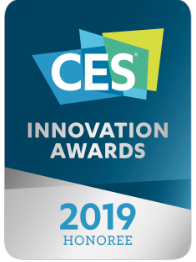The Top 3 Innovative Features of the Automotive Grade Linux UCB
Last month the Automotive Grade Linux (AGL) Unified Code Base (UCB) was listed as a CES Innovation Awards Honouree. AGL is a game-changing project for the automotive industry focused on bringing a fully-open software stack to the connected car, and we’re proud to have recently been named one of the top contributing companies.
AGL provides an operating system, middleware and application, known as the Unified Code Base (UCB), on top of which its nearly 140 member companies can rapidly build stable products. With all of those companies contributing to the project, there are plenty of innovative software features to talk about. Here, in our opinion, are the top 3:
1. Over-the-air (OTA) Updates
Today’s cars are collections of embedded systems, each running their own software stacks. As security issues are uncovered, updates need to be rolled out across fleets of cars as quickly as possible. Plus, with product life-cycles growing longer, software needs to be supported in production for longer and that often means shipping new features to older vehicles.
OTA updates prevent the need to recall cars simply to apply software updates. The ability to apply updates with cars still on the road is a major advantage because recalls inconvenience customers and can lead to reputational damage for manufacturers. They’re also extremely expensive.
As of the Electric Eel release, the AGL UCB includes a software layer for OTA upgrades. AGL uses the OSTree and Aktualizr projects to provide atomic, full file-system upgrades with rollback capability. As OSTree uses the file system to perform updates, it minimizes the network bandwidth and data storage requirements.
2. A Wide Range of Hardware Board Support
One of AGL’s goals for the UCB is to provide a single software platform for the entire automotive industry, and the UCB provides 70-80% of a finished product out of the box. That obviously includes applications, connectivity, and graphics, but it also includes a wide range of hardware board support for vendors such as Renesas, Qualcomm Technologies, Intel, Texas Instrument, NXP and Raspberry Pi.
And developers continue to contribute new support. Initial 64-bit ARM support was merged for the Electric Eel release earlier this year with the addition of the Renesas R-CAR Generation 3. Now, Renesas is working on contributing support for the ARM big.LITTLE architecture which can provide substantial performance improvements and power savings when combined with Energy-Aware Scheduler (EAS) patch series that’s part of the Renesas BSP.
3. Automated Continuous Integration and Testing
AGL is a “code first” project which means that it favors working code over writing lengthy specifications. All of that code has to be tested, and testing quickly and thoroughly is an important part of accelerating time-to-market with AGL’s shared software platform.
AGL has built extensive infrastructure for testing code changes. Defining the architecture of that testing infrastructure is the job of the Continuous Integration and Test (CIAT) expert group who, like all AGL expert groups, meet regularly to plan and coordinate development efforts.
Within the CIAT infrastructure, open-source software projects such as Fuego, LAVA, and Kernel CI provide comprehensive testing and allow every gerrit submission to be built and smoke tested on a range of hardware. But new changes aren’t just tested in isolation: daily snapshots are built and tested to catch any integration issues as early as possible.
We’ve written previously about how BayLibre contributed changes to both Kernel CI and AGL to harness the power of scalable automated testing, and we even housed a temporary Kernel CI backend in our office while the AGL project transitioned to their own instance. To see AGL’s Kernel CI instance in action visit https://kernelci.automotivelinux.org/.
Check out the AGL Booth at CES 2019
These are just some of the technical highlights of the AGL UCB. With over 2000 commits so far in 2018, new features and bug fixes are shipped in every release. If you’re attending CES 2019, January 8-11 in Las Vegas, be sure to check out the AGL Demo Showcase (Westgate Hotel Pavilion, booth 1614) to see the UCB on display.

